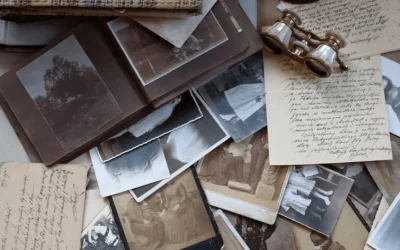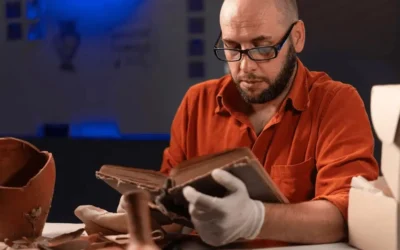Technology’s Impact on Archives
Margot Note
Technology has changed how archivists do their work. The impact has been dramatic, but it has occurred over decades, so the transformations have been gradual.
The Impact of Computers
Before the 1980s, repositories collected, arranged, and described materials according to archival principles applied in idiosyncratic ways. Researchers knew about collections by word of mouth, footnotes, and published guides and corresponded with archivists for information. Unless the query resulted in an identifiable response, the researcher was expected to visit, sit in the reading room, and review the materials.
In the 1980s, archivists saw libraries adopt online catalogs and other collection management tools. Over time archivists embraced technology and automated archival collections management practices. These activities resulted in the development of standards, and the recognition that sharing information across repositories was desirable. Early mechanisms for sharing information were through bibliographic utilities, using designated computers and lines, unavailable to the public.
The Impact of the Internet
The World Wide Web, launched in the 1990s, altered how archives communicated with the world and changed user expectations. The Internet sped up automation activities. Not only were archivists developing collection management tools, implementing OPACs for bibliographic description, and creating databases for internal and external use, but they were also developing new ways of sharing information beyond repository walls.
In the first generation, the catalogs were online, but the researcher still had to contact the archives to see the full inventory. In the 1990s, repositories began encoding their finding aids in Encoded Archival Description (EAD) and posting them on websites or making them available through other means. Researchers found materials on their own as well as through repository websites, which stimulated the sharing of information, both among archives and with the public.
Archivists now dealt with actual digital holdings and not just collection management tools and internal recordkeeping systems. They acquired born-digital records and digitized analog collections. Archival websites became an outreach tool, and not only an online catalog.
Important Questions
These developments raise the following questions:
- Does provenance still have relevance? Records are created and distributed with ease in organizations, which makes it challenging to ensure that records from one source don’t mix with another source.
- Do digital records have an original order? Is original order meaningless in an environment where files are retrieved and sorted differently based on various queries?
- How do archivists identify an original document when there is often no single copy? How does one determine authenticity?
- In an analog world, records transfer to an archives when they are no longer needed for the primary value for which they were created. In a digital world, inactive records are difficult to identify. Recordkeeping systems are designed to meld various kinds of data, as well as supersede old data. Will records physically transfer to the archives, or will they remain with the records creators indefinitely?
- Is it necessary to appraise, arrange, and describe collections when a computer can search vast quantities of material for keywords?
- Do appraisal and accessioning decisions become more straightforward or more complicated in a world without physical permanence? What impact will technology have on the notion of continuity?
- Does the decline of permanence shed light on the motivations that cause creators to create records and archivists to keep them?
- What is the role of the repository in promoting collections when Google can find most information?
- Are researchers interested in what a repository has to offer or only in finding specific information?
- How does that change when the researcher never talks to the archivist? Is it the same to put everything on the website?
- How do these changes affect what archivists tell donors about how they will manage collections and make them available?
- What do archivists need to know in a digital age in terms of collaborating with other staff members and various constituent groups?
No Easy Answers
Fundamentally, archives haven’t changed. Records are produced by some generating technology, be it pencil, typewriter, or computer. The fundamental activities of archivists remain the same, but how they do it evolves.
Margot Note
Margot Note, archivist, consultant, and author is a guest blogger for Lucidea, provider of ArchivEra, archival collections management software for today’s challenges and tomorrow’s. Read more of Margot’s posts here, and get your free copy of Margot’s latest book for Lucidea Press, Demystifying Archival Project Management: Five Essentials for Success!
Similar Posts
Texas Archive of the Moving Image: Interview with the Digital Archivist
I recently interviewed Grace Muñoz about her work at the Texas Archive of the Moving Image. Her work on improving the discoverability of the multimedia collection is fascinating.
How to Conduct Comprehensive Archival Surveys
Conducting a comprehensive archival survey is critical to successfully managing archival collections.
Remembering History, Moving Forward Together, with ArchivEra
The Catholic Diocese of Arlington’s Director of Archives selected ArchivEra to manage their collections of historical and cultural significance, and strike a balance between security and access.
Unveiling Archival Impact
The transformative power of storytelling depends upon the strategic choices that top archival performers make and the shift from being record-keepers to change agents.




Leave a Comment
Comments are reviewed and must adhere to our comments policy.
0 Comments